Nimbu or Citrus limon has no specific origins that can be identified. While there are speculations regarding the fruit being native to Assam in India, there is no solid evidence to support this. Moreover, there is no difference between Lemon and lime in India. All of the varieties of Nimbu are therefore referred to as Nimbu. Let’s check out high yield hybrid lemon varieties in India below.
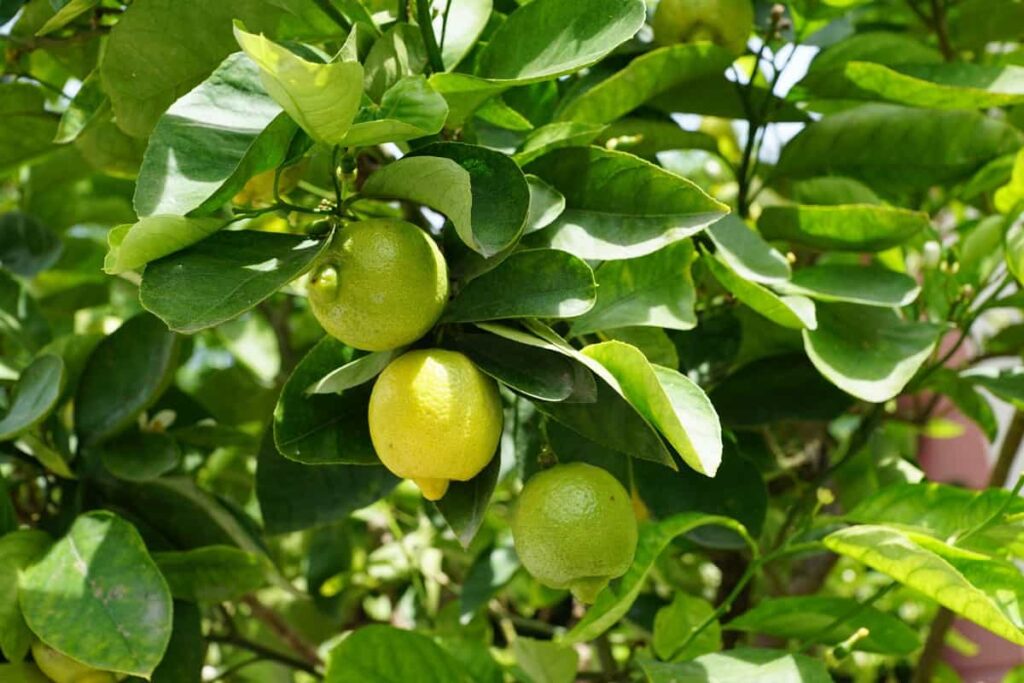
This fruit has several uses, and it is grown throughout the country. However, lemons’ commercial production is currently occurring in Andhra Pradesh, Maharashtra, Tamil Nadu, Gujrat, Rajasthan, and Bihar. It is also grown in other states for domestic use as well. A typical Indian lemon can be defined as a small to medium-sized fruit, usually 3 to 7 centimeters in diameter, and it has a variety of shapes, such as round, oval, and oblong, depending on its variety.
When the fruit is young, the skin is green, and when mature, the skin transforms from a variegated yellow-green hue to a bright yellow color. Under the skin surface, a thin membrane divides the yellow-green flesh into 12 to 13 segments encasing several cream-colored seeds within. Because citrus fruits are less demanding and can grow in almost any soil type, Lemons are available all year round in the markets.
However, there is a higher cultivation rate in the country’s north than in the south. Among all the countries in the world, India is the one that produces the most lemons. Despite that, the Lemons grown in this country are not as large as those grown in other countries. Yet, despite this, the company exports fresh lemons to countries like Japan, Thailand, Bangladesh, etc.
Climatic and soil requirements for Lemon cultivation
It is not uncommon for lemon fruits to be cultivated under various agroecological conditions in India, from the arid and semi-arid regions of the southwest region to the humid tropical climates of north-eastern India. The lemon tree grows in subtropical climates worldwide, and it is an evergreen tree. There is a temperature range between 13°C C to 37°C, which is the best range for growing lemon fruits. It is harmful to young plants if the temperature falls below -4°C.
In case you missed it: High Yield Hybrid Grapes Varieties in India: State Wise Varieties Cultivated
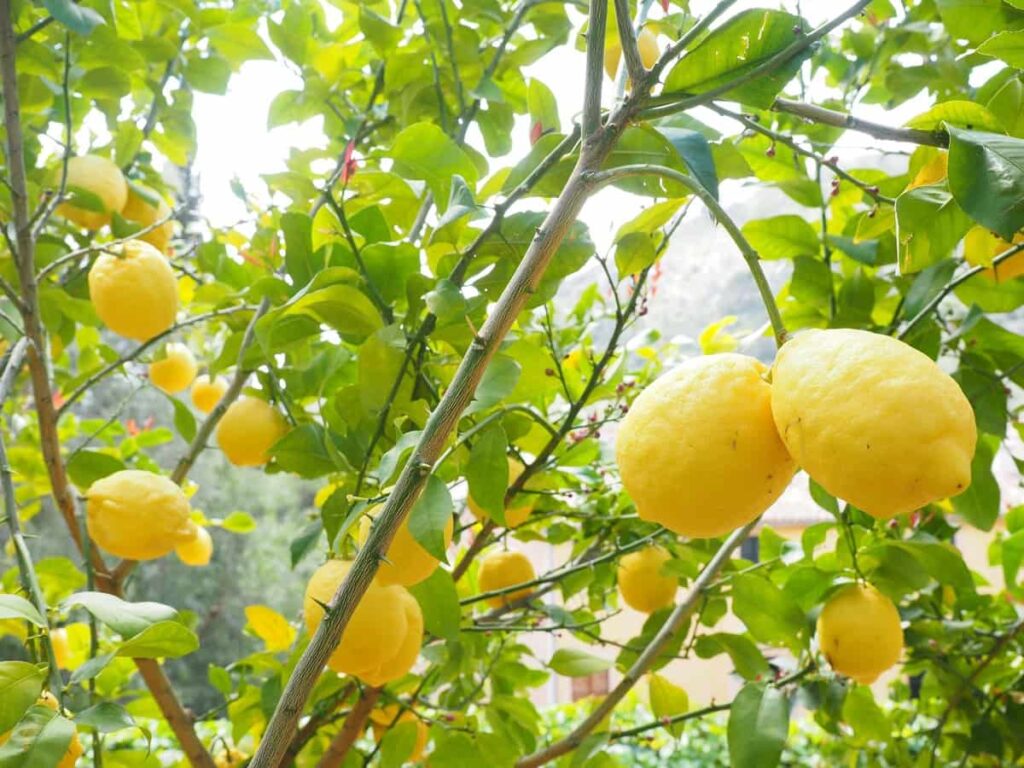
It appears that soil temperatures between 25°C and 28°C are optimal for the growth of roots. Many diseases are more likely to spread in high-humidity environments. It is highly dangerous to be exposed to frost. In the summer, the hot wind results in the desiccation of the leaves, the drop of flowers, and the development of fruits. Except for these limitations, lemons can be grown everywhere, whether in subtropical or tropical regions. There is no better climate for the development and growth of Lemons than a subtropical climate.
Therefore, it is adapted to a cooler climate and is grown at high altitudes up to 2000 m in Khasi and Darjeeling mandarin orchards. The plants are grown in various soil types ranging from sandy loams to alluvial soils (made up of silt, sand, clay, and gravel) found in north India to clay loams, deep clay loams, lateritic soils, and acidic soils in the Deccan areas and north-eastern hills.
The lemon orchard thrives well in light soils with well drainage properties, which are ideal for growing lemons. Ideally, deep soils with a pH range of 5.5 to 7.5 are considered to be the most suitable. However, they can also be cultivated in a pH range of 4.0 to 9.0. A high calcium carbonate concentration in the feeder root zone may adversely affect growth.
High yield hybrid Lemon varieties in India
All true Lemons are variants of Citrus limon (citrus x limon). This species likely contains hundreds of wild hybrids and dozens of established varieties. As a matter of convenience, fruits that are not technically C limon are referred to as “not true” Lemons and grouped under the general heading of “Lemon.” Some “not true” Lemons include hybrids with other citrus fruits. Some common species with which Lemons are crossed are listed below.
Gondhoraj
Bengal is the birthplace of the fragrant Lemon type known as Lemon Gandharaj. Two main characteristics distinguish it from its cousin, the common Lemon: its hard green skin and powerful aroma. You only need a thin slice of this fragrant and flavorful ingredient to bring a whole new dimension to any dish you prepare. Furthermore, you will be able to improve your immunity if you consume this regularly, as it is high in vitamin C and citrus acids.
Pat Nebu
Pat Nebu is a lemon from Assam which has a balanced acidic composition. It is bright, tiny, smooth, and glossy in appearance. Some regions in Nepal produce this type of Lemon as well. Despite its medium size, this Lemon variety is relatively seedless and has a delicious aroma.
Assam Nimbu/ Nemu Tenga
The name refers to two types of Lemon that grow in Assam: Gol Nemu and Kazi Nemu. Gol Nemu is round and sweet. Furthermore, it is usually larger than other varieties. On the other hand, Kazi Nemu is juicier with an elongated oval shape. Nemu is popular in Assam because it is used in Assamese cuisine.
In case you missed it: High-yield Hybrid Papaya Varieties in India: How to Grow, Fertilizers, Pests, and Diseases
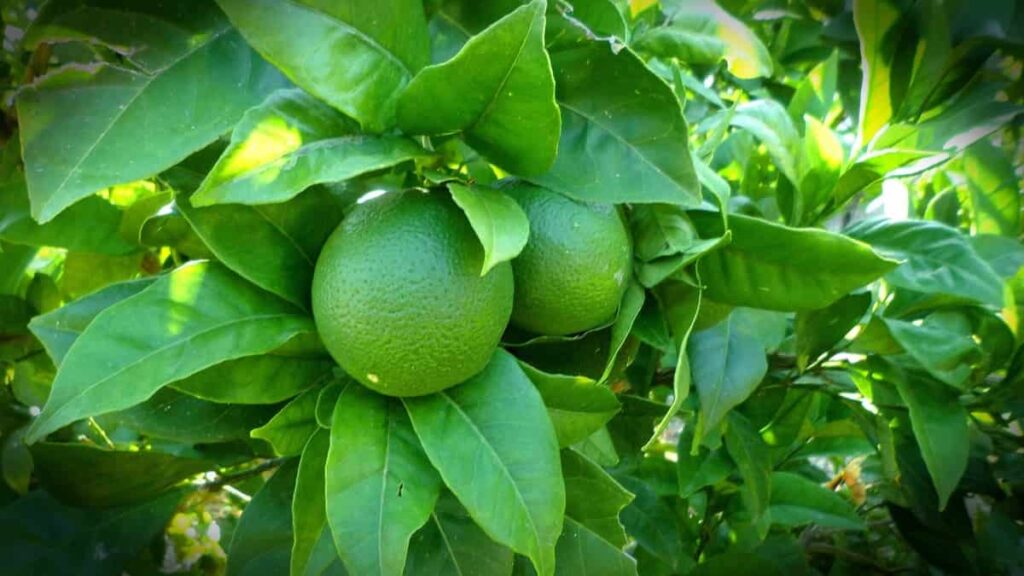
4. The Lisbon Lemon
One of the widely available varieties of Lemon is the Lisbon Lemon (Citrus x limon ‘Lisbon’). In mature lemons, the flesh is highly acidic, juicier, and contains few or no seeds, and the fruit is bright yellow when mature. Lisbon Lemons are frequently confused with another popular Lemon variety called Eureka, a popular lemon variety. Under the right conditions, Lemons can be harvested throughout the year once mature; however, the main crop is harvested in winter.
It is possible to overwinter these trees indoors in colder climates if they are grown in containers. In warm climates, Lisbon Lemon trees can be planted throughout the year and usually reach maturity within three years. When grown outdoors, they can reach heights of over 15 feet. In addition, they produce pretty white blooms with a fragrance reminiscent of orange blossoms. Unfortunately, Lemon skins and plant materials are toxic to cats, dogs, and horses.
Rough Lemon
North India is the primary region where this variety of Lemon grows. Rough Lemon is a large variety with a gnarled, round to oblate shape and an average diameter of 7 to 8 centimeters. With a prominent nipple on one end, the Lemon’s skin is covered in a thick rind, wrinkled, and creased. Additionally, the surface is leathery and textured, with prominent oil glands giving the rind a pebbled appearance. Lemons can be used for culinary purposes at any stage of ripeness, from green to pale yellow to golden yellow-orange.
Underneath the surface, a little flesh wrapped in a spongy white pith, divided into 10 to 11 segments by white fibrous membranes. Lemons may have a hollow cavity in the center of the flesh and a few cream-colored oval seeds. Compared to common Lemon varieties, rough lemons are more acidic and have a slightly sweeter taste. With tangy, fruity, floral, and sour notes, Lemons have a bright, sweet-tart taste.
Rasraj
A polyembryonic hybrid developed by breeding for resistance to bacterial canker disease is Rasraj. In this hybrid, the Nepali Round Lemon parent contributes genes for canker resistance, while the acid lime parent contributes other characteristics. The rind is thicker than lime. It has an acidity of 6% and a TSS of around 8%. Yellow-colored and weighing about 55 grams, it contains 70% juice and 12 seeds.
Nepali Round
When you look at its name, you may get confused. But, despite its name, this Lemon variety has grown successfully in South India for decades. Nepali Rounds are very juicy and contain fewer seeds.
Mausambi- Sweet Lime
Mausambi, also known as sweet lime, is a citrusy fruit typically grown in southern India. These lime varieties are native to the Malabar and Nilgiri regions of India. Typically, limes are consumed as juice or beverages, and they are generally bigger and juicier.
Genoa Lemon
Commercially, this variety is grown in India. Lemons of this type are oval or oblong and contain a considerable amount of juice. They are also yellow. Lemons of this type are suitable for pickles and marmalades because they are juicy.
Kagzi Lemon
Its plants are not very large. Fruit is produced by the Lemon tree twice a year after it has been planted for 3 to 4 years. Due to this, it has become more attractive to Indian farmers. The fruit is ready between 150 and 180 days after planting. The average annual production of one plant is 1000 to 1200 fruits. 52% of Lemon juice is obtained from the paper Lemon.
Pramalini
The yield of this variety is 30 percent higher than that of ordinary Kagazi Lemons. Commercially, the Pramalini variety is grown. The lemons in this variety are prepared in bunches. One lemon yields up to 57 percent juice. Each plant produces fruits at a rate of 40 to 50 kilograms.
Vikram
In the Vikram variety of plants, the fruit that emerges from clusters is one of the main characteristics. There are 7 to 10 lemons that can be obtained from one bunch of them. This plant produces lemons only throughout the year, so it is possible to see them all year round. September. It produces between 30% and 32% more lime than ordinary lime.
In case you missed it: High Yield Hybrid Mango Varieties in India: State Wise Growing Guide
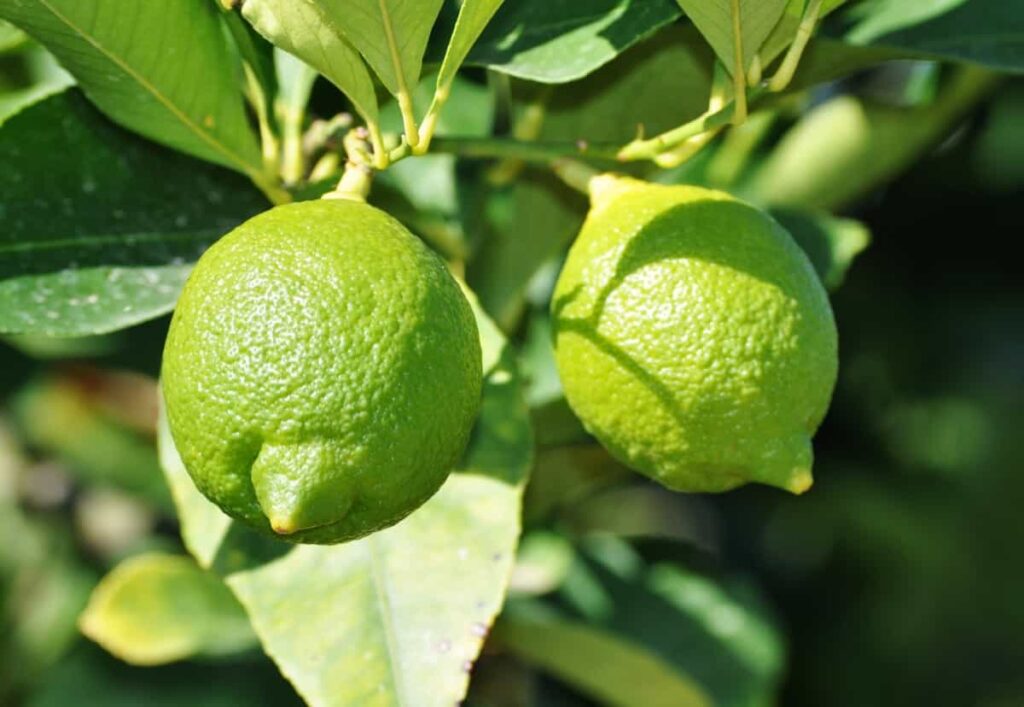
Chakradhar
Interestingly, Chakradhar Lemons do not have seeds, and about 65% of their juice comes from fruit. Its plants are straight and dense. The fruits of this plant are round in shape. It takes four years for the fruit to start after the seeds are planted. Fruits of this plant are available from January to February, June to July, and September to October.
PKM-1
In addition to the fruits being round, medium to large, and yellow, it contains about 52 percent juice in each fruit. As a result of its resistance to canker, Tristeza, and leaf borer diseases, this variety is very popular.
Sai Sharbati
Large quantities of this variety are grown in hilly areas like Assam, where it is widely available. It is well known that plants of this variety yield the maximum amount of fruit. Aside from this, one characteristic of this Lemon is that it does not have seeds. Their skin is very thin.
Punjab Baramasi
Shoots dropping are usually ground touching. Lemon trees produce yellow fruits with a round shape with a tapering base. Fruits that do not have seeds are juicy and delicious. It is estimated that the average fruit yield per tree is 84 kilograms.
Eureka
It is a semi-vigorous tree. There is a lemon-yellow skin color, and the juice is very acidic with an excellent flavor. August is the month when the fruit ripens.
Punjab Galgal
The foliage color of the trees is light green with a vigorous growth habit. The fruit is medium in size and oval in shape. As for the juice, it is very acidic, and there are 8 to 10 seeds in each fruit. There is a ripening period between November and December when the fruits are ready to be harvested. The average fruit yield per tree is estimated to be between 80 and 100 kg.
PAU Baramasi
July’s first week is the right time for the fruit to mature and harvest. This tree produces a yield of approximately 84 kg in an average year and contains a very small number of seeds.
PAU Baramasi-1
The right time for fruit maturing is the last week of November month. There are no seeds in the fruit. On average, it yields 80 kg per tree, which is a very good yield.
In case you missed it: High Yield Hybrid Paddy/Rice Varieties in India: For Rabi and Kharif Seasons

Lemon season in India
There are three lemon seasons in a year: the Ambe season, the Mrig season, and the Hasta season.
- During the Ambe season, flowering occurs from January to February, and fruit formation occurs from April to May.
- During the Mrig season, orchards bloom during June and July, and the harvest takes place in October.
- In the hasta season, the flowering period lasts from September to October, and the harvest occurs between March and April.
Because these seasons overlap, there is always a supply of Lemons available throughout the year. The high rainfall season experienced in the country might be the reason behind the shortage of lemon supply. Furthermore, the occurrence of cyclones around the time of the lemon harvest also seems to have impacted the harvest of lemons. The lemon orchards are extremely sensitive to excess moisture, so flowering will not be possible in the orchards due to the heavy rainfall.
A second reason is the soaring temperatures post-February, which has caused the younger fruit to drop. There is always a rise in demand for lemons during the summer months. It is so when the supply of hasta and ambe season feeds the market. However, the failure of the seasons has led to a decline in the supply of lemons. As a result, lemon prices have risen suddenly.
Harvesting Lemons
Upon reaching the proper size, shape, and attractive color with an acid ratio of 12:1, Lemon fruits are ready for harvest. Fruits are generally ready for harvesting between Mid-January and Mid-February, depending on the variety. It is important to harvest at the right time. Poor quality will result from harvesting too early or too late.
After harvesting, wash fruits with clean water, dip them in chlorinated water at 2.5 ml per liter, and partially dry them. Citrashine wax coating and foam are recommended to improve appearance and quality. Afterward, these fruits are dried under shade, and then they are packed.
In case you missed it: High Yield Hybrid Cotton Varieties in India – For Rabi, and Kaharif Seasons
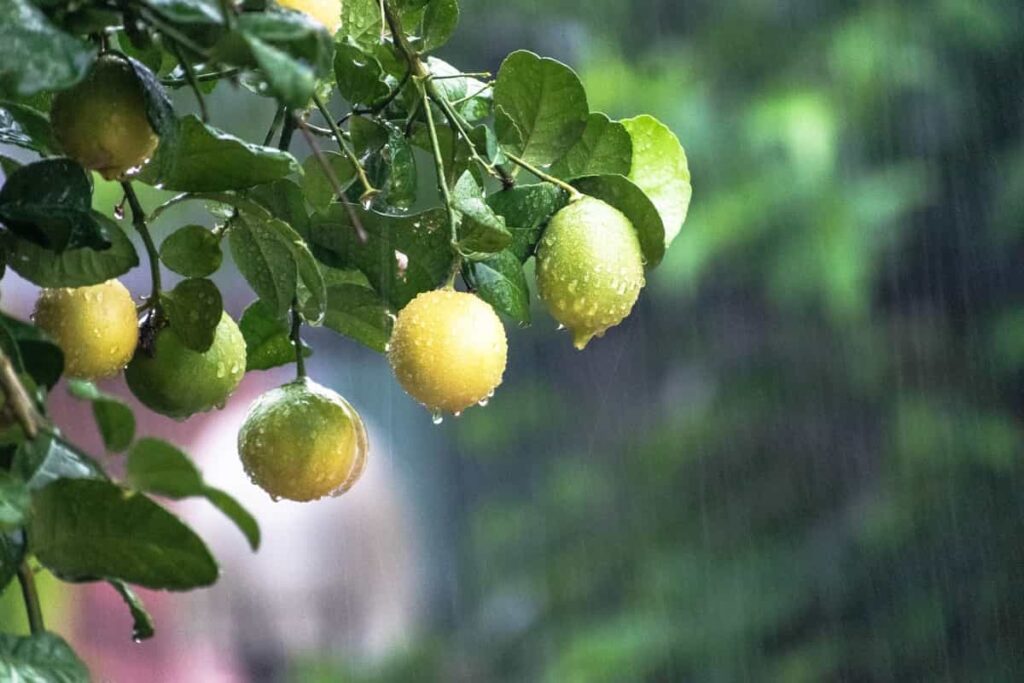
Tips for growing lots of lemons
- At the time of planting, manure should be added as a base. You will never achieve the desired result by adding only dung.
- If lemons receive enough nitrogen and phosphorus, they produce good yields.
- Lemons should never be intercropped with other plants
- The most important thing is that it needs plenty of sunlight. Pesticides do not need to be applied excessively. During the summer, the bed should be watered twice. There is no need to wet this excessively.
- Lime trees also benefit from pruning after fruiting.
- It is recommended to remove unhealthy stalks and stems containing lime. Lemons are produced from new stalks.
- For accelerating lime growth, bone meal and potash are excellent.
- The soil around it needs to be well-drained for it to take root properly.
- Butterfly worms attack the most common of these. The neem garlic mixture is best to prevent this. This mixture is also an effective method for curling its leaves.
Conclusion
The hybrid varieties discussed above are developed to meet the current market requirements and overcome supply shortages. In addition, by cultivating hybrid lemon varieties, farmers will get better profits due to high yields, and the trees are resistant to diseases, thereby reducing pesticide usage.
- Sheep Farming Business Plan for Beginners
- Aquaponic Farming at Home: A Step-By-Step Guide
- Profitable Village Farming Business Ideas in 2024
- High-Yield Aquaculture: Fast-Growing Fish for Farming
- Effective Fish Pond Construction Techniques for Beginners
- Irrigation and Water Management in Pineapple Farming
- Blossom to Harvest: Mastering Flowering and Pollination in Papaya Farming
- Pig Fattening Essentials: From Selection to Sale for Beginners
- Raising Wagyu Cattle: A Complete Guide for Premium Beef Production
- Soil Types and Their Water Holding Capacity
- Optimizing Irrigation Schedules for Coconut Groves for Enhanced Yield
- Espresso Your Garden: Coffee Grounds for Healthier Acid-Loving Plants
- The Best Soil Mix for Snake Plants: How to Mix Your Own Snake Plant Soil
- Green Thumb Success: Expert Tips for Cultivating Greenhouse Beans All Year Round
- Bloom All Year Round: The Ultimate Guide to Indoor Hyacinth Care
- Eco-Friendly Gardening: How to Make Liquid Fertilizer from Kitchen Waste
- Ultimate Guide to Grow Anise in Pots: Explore Seed Propagation to Harvesting
- Guide to Raising Chester White Pigs: Discover Breed Facts to Growth Management
- Mastering the Elegance: The Ultimate Guide to Weeping Cherry Tree Care, Planting, and Maintenance
- Ultimate Guide to Planting Garlic in Grow Bags: Growing Strategies for Beginners
- How to Fix Spider Plant Leaf-Related Problems: Natural and Organic Remedies
- 10 Reasons Why Your Tulsi Plant is Shedding Leaves: Home Remedies and Solutions
- Optimizing Growth and Yield: The Advantages of Palm Bunch Ash Fertilizer
- Utilizing Neem Oil Extract as a Natural Pesticide for Hydrangea
- From Soil to Harvest: Various Ways in Which Farmers Can Use AI Tools
- Steps to Encourage and Induce Citrus Flowers: A Comprehensive Guide
- How to Fix Snake Plant Leaf-Related Issues: Natural and Organic Remedies
- Transform Your Garden into a Fragrant Oasis with Raat Ki Rani (Night Blooming Jasmine)
- Discover the Ideal Chicken Breeds for Philippine Farms
- How to Create a Poultry Egg Farm Business Plan for Profits
- Grow Lemon Cucumbers Like a Pro: Insider Techniques for Bountiful Yields
- Ultimate Guide to Caring for Your Pink Princess Philodendron: Tips for Thriving Variegation
- Areca Nut Profit Per Acre: Calculating Yield and Cost of Cultivation
- How Kaveri Chicken is Becoming a More Profitable Breed in Indian Backyards
- Transform Your Barn: 9 Steps to Convert a Horse Stall into a Chicken Coop
- Exploring Suffolk Sheep Disadvantages with Limitations and Challenges

I need the plants at tamilnadu.
Thanks
Need 1000 highbrid lemon plant at jharkhand ranchi..